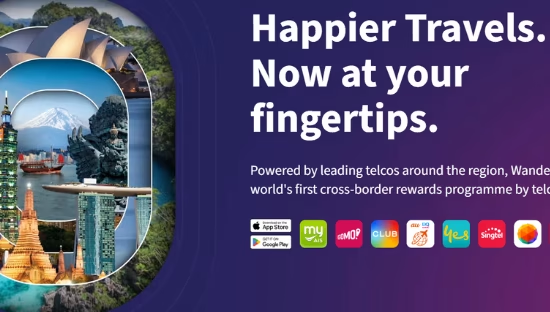
AT&T and Thales Join Forces to Simplify Global IoT Connectivity with a Smarter eSIM Solution
The Internet of Things isn’t just growing—it’s exploding. According to GSMA Intelligence, more than 5.8 billion IoT cellular connections are expected globally by 2030, connecting everything from smart meters to cars and wearable health trackers. Behind that growth lies a critical challenge: how to securely and efficiently connect and manage billions of devices across multiple countries, networks, and use cases.
Enter AT&T and Thales. The two giants have announced a powerful new eSIM solution designed to simplify IoT connectivity at scale. Their joint innovation—Thales Adaptive Connect (TAC) integrated into AT&T’s Virtual Profile Management for IoT — aims to make deploying and managing connected devices as seamless as possible for businesses worldwide.
What Makes This eSIM Solution Different
This isn’t just another connectivity tool. What AT&T and Thales have created aligns with the GSMA SGP.32 standard, the latest specification for Remote SIM Provisioning (RSP) designed specifically for IoT. That means one eSIM can be deployed globally and later activated locally—without physically touching the device.
Imagine a manufacturer shipping connected sensors to multiple countries with a single eSIM pre-installed. Once the devices reach their destinations, they automatically connect to the best local network via a secure over-the-air update. No swapping SIMs. No manual configuration. Just instant, intelligent connectivity.
This approach eliminates logistical headaches and accelerates time-to-market—a major advantage for industries like automotive, healthcare, utilities, and smart cities that operate massive fleets of connected devices.
Remote Management and Automation at Scale
The beauty of Thales Adaptive Connect lies in its automation. It handles complex tasks such as subscription switching, diagnostics, and policy updates entirely over the air.
For businesses managing thousands — or millions — of IoT endpoints, that’s a game-changer. Fleets can now be updated, optimized, or even localized to different network partners without ever needing hardware changes.
In other words: global reach with local intelligence.
As Cameron Coursey, VP of AT&T Connected Solutions, puts it:
“Our state-of-the-art approach, paired with Thales’ solution, will help customers reduce friction and gain control of managing their own devices with reliable connectivity.”
Security and Flexibility, Built-In
Security has always been a weak spot in IoT, especially when devices operate in critical environments. Thales’ involvement changes that equation. Known for its cybersecurity expertise, Thales ensures each eSIM includes strong authentication, encryption, and lifecycle management from activation to retirement.
The system also enables enterprises to localize within AT&T’s network partners, giving them the flexibility to optimize costs and maintain compliance with regional data regulations. This type of adaptability is essential in markets with strict connectivity laws, such as the EU or China.
As Eva Rudin, EVP of Mobile Connectivity Solutions at Thales, notes:
“We’re entering a new era for remote eSIM provisioning, ready to power billions of IoT devices… With Thales Adaptive Connect, we’re ensuring that every connected device benefits from strong security, reliable service, and simplified management.”
Why It Matters: The Bigger IoT Picture
This partnership isn’t happening in isolation. The IoT connectivity space is heating up fast, with Vodafone, Deutsche Telekom, KORE Wireless, and Ericsson all developing their own eSIM-based IoT management solutions. But AT&T’s collaboration with Thales has one major advantage—scale and trust.
AT&T already supports millions of IoT devices through its global network, while Thales provides security solutions to telecom operators and governments worldwide. Together, they create a blend of reach and resilience that few can match.
The GSMA SGP.32 standard is also a pivotal shift in the industry. It’s designed to make remote provisioning more flexible and interoperable, addressing one of IoT’s biggest historical bottlenecks: fragmentation. With this standard, switching between operators or updating connectivity profiles becomes simpler, safer, and faster—driving the next wave of IoT adoption.
The Market Context: Who Else Is Moving
Competitors like Vodafone’s Global IoT Platform and Deutsche Telekom’s IoT Hub have been integrating similar eSIM management features. However, AT&T and Thales are positioning their solution as more modular and automation-driven, with direct over-the-air control through a single certified interface.
Moreover, while KORE Wireless focuses on connectivity for specialized verticals like healthcare and logistics, and Ericsson’s IoT Accelerator targets large enterprise ecosystems, AT&T’s offering aims for simplicity and immediate scalability — two things most businesses actually need right now.
Final Thoughts: A Smarter Future for Connected Devices
As IoT continues to evolve, connectivity will be the backbone that determines how efficiently devices communicate, how securely they exchange data, and how quickly enterprises can scale. The new AT&T–Thales eSIM solution isn’t just another infrastructure upgrade; it’s a step toward frictionless global IoT deployment.
It reflects a growing industry trend—the convergence of telecom and cybersecurity—where automation, remote management, and standardization (like GSMA’s SGP.32) are redefining what “smart connectivity” means.
With this move, AT&T and Thales aren’t just keeping up with the IoT revolution—they’re setting the pace for it.











